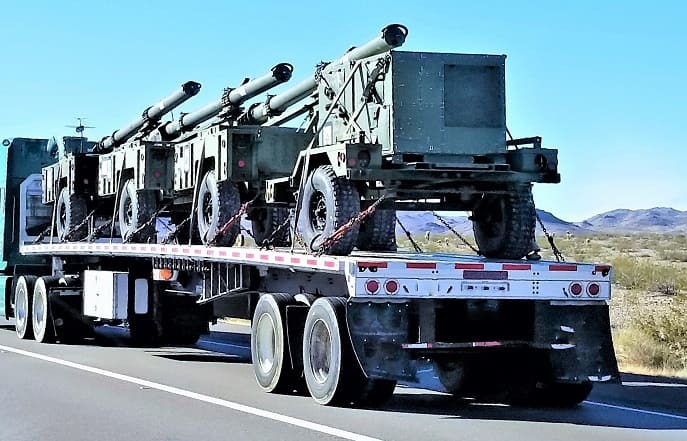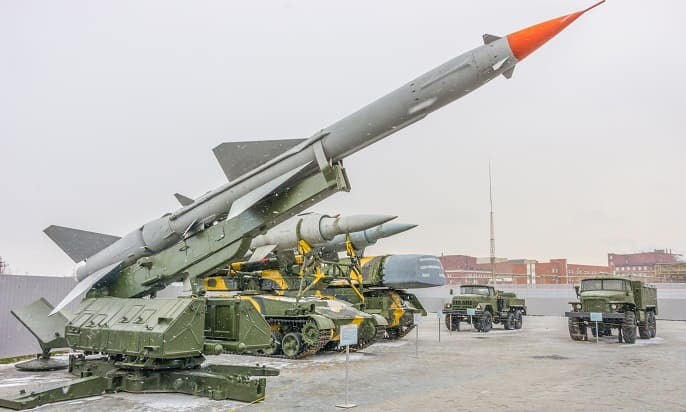
 Data Structure
Data Structure Networking
Networking RDBMS
RDBMS Operating System
Operating System Java
Java MS Excel
MS Excel iOS
iOS HTML
HTML CSS
CSS Android
Android Python
Python C Programming
C Programming C++
C++ C#
C# MongoDB
MongoDB MySQL
MySQL Javascript
Javascript PHP
PHP
- Selected Reading
- UPSC IAS Exams Notes
- Developer's Best Practices
- Questions and Answers
- Effective Resume Writing
- HR Interview Questions
- Computer Glossary
- Who is Who
What is the full form of DRDO?
Introduction
Defence Research and Development Organisation (DRDO) is India's largest research and development body with a nationwide network of more than 50 laboratories and institutions. Its main goal is to create and develop home-grown weapons and technologies for the Indian military.

The organisation works on the creation of a broad variety of goods and technology, such as missiles, radars, electronic warfare systems, communication systems, naval systems, aeronautical systems, and many more. The Agni missile series, BrahMos cruise missile, Pinaka multi-barrel rocket launcher, and Tejas light combat aircraft are just a few of the well-known items created by DRDO.
History and evolution of DRDO
The Government of India founded the Defence Research and Development Organisation (DRDO) in 1958 with the primary goal of developing domestic defence technology and apparatus. The group was established with the intention of lowering India's reliance on other nations for defence-related goods and technologies.
Early on, the DRDO concentrated on the creation of radar systems, guided weapons, and missiles. The creation of the Nag and Anza missiles, the Rohini radar system, and the early warning system for the Indian Air Force were some of its significant accomplishments during this time.
The Defence Research and Development Organisation (DRDO) broadened its scope in the 1980s and 1990s to cover a larger spectrum of defence technology, including electronic warfare, communication systems, and naval systems. It also worked together to create cutting-edge technology with several international nations and organisations.
The DRDO made great strides in the creation of missile technology in the 2000s. It created the Agni-I, Agni-II, Agni-III, and Agni-IV missiles of the Agni missile series. Along with Russia, it also created the BrahMos cruise missile.
DRDO has concentrated on creating cutting-edge technology in recent years, particularly in unmanned systems, cyber security, and artificial intelligence. It has also been focusing on creating technology for use in space.
The DRDO has expanded over the years into a sizable organisation with a network of more than 50 laboratories and sites dispersed throughout India. It has been essential in enhancing India's defines capabilities and lessening its reliance on outside nations for defence-related goods and technologies.
Objectives of DRDO
The following are the objectives of the Defence Research and Development Organisation (DRDO)
To create cutting-edge defence systems and technology that satisfy the requirements of the Indian Armed Forces.
To provide defence forces technology solutions that improve their fighting efficiency and capability.
To lessen India's reliance on other nations for technology and products connected to defence.
To conduct cutting-edge technological research and development in fields including nanotechnology, materials science, and artificial intelligence, among others.
To work with research and academic institutes both in India and overseas to create cutting-edge technology for the defence industry.
To build and keep up a high level of knowledge and experience in the area of defence research and development.
To provide technological know-how and skills in order to aid the local defence industry's development.
To encourage defence manufacturing that is independent and to cut back on defence technology and equipment imports.
To teach and educate scientists, engineers, and other professionals in defence technologies.
By creating cutting-edge technologies and systems for the Indian Armed Forces, the DRDO seeks to improve India's defence capabilities and encourage self-reliance in the production of defences.
Achievements of DRDO
Significant progress has been made by the Defence Research and Development Organisation (DRDO) in creating cutting-edge systems and technologies for the Indian Armed Forces. Some of its notable achievements include
Missile technology The Agni missile series, Prithvi missile, Akash missile, and BrahMos cruise missile are just a some of the missiles that DRDO has produced. India's deterrent capabilities have been greatly improved by these missiles.
Radar systems The Rohini radar, the ATC radar, and the Rajendra radar are just a few of the radar systems that the DRDO has created. India's air defence capabilities have strengthened because of these radar systems.

Electronic warfare Samyukta electronic warfare system and Sangraha data fusion system are only two of the electronic warfare systems that DRDO has created. India's ability to conduct electronic warfare has enhanced because of these technologies.
Naval systems The Advanced Light Torpedo Shakti, the Hull Mounted Sonar, and the Varunastra torpedo are just a few of the naval systems that DRDO has produced. India's naval capabilities have strengthened because of these technologies.
Aeronautical systems The Tejas light combat aircraft and the Rustom line of unmanned aerial vehicles were created by DRDO.
Cybersecurity The Secure Communication System and the Information Security Education and Awareness (ISEA) program are only two of the cybersecurity technologies and products that DRDO has created. India's cybersecurity skills have strengthened as a result of these technologies.
Conclusion
For more than 60 years, the Defence Research and Development Organisation (DRDO) has made significant contributions to India's defence capabilities. India's reliance on foreign nations for defence-related goods and technologies has decreased as a result of the country's concentration on creating homegrown technology and equipment for the Indian Armed Forces. With more than 50 laboratories and sites located across India, DRDO has played a key role in the development of cutting-edge technologies and systems in a variety of fields, including missile technology, radar systems, electronic warfare, naval systems, and aeronautical systems.
FAQs
Q1. What are some of the ongoing projects and initiatives of DRDO?
Ans: The Astra Mk2 beyond-visual-range air-to-air missile, the MWF (Medium Weight Fighter) aircraft, the SMART (Supersonic Missile Assisted Release of Torpedo) system, and the Advanced Medium Combat Aircraft (AMCA) program are just a few of the active programs and activities within DRDO. Additionally, the DRDO is focusing on advancing its cyber capabilities and creating technologies for use in space applications.
Q2. How does DRDO collaborate with other organisations and institutions?
Ans: Academic institutions, research groups, and international entities are among the organisations and institutions that DRDO works with. It works together with these organisations to create cutting-edge defence technologies and systems, share information and skills, and strengthen India's strategic capabilities.
Q3. How does DRDO contribute to India's self-reliance in defence production?
Ans: DRDO's focus on developing indigenous technology and equipment for the Indian Armed Forces reduces India's dependence on foreign countries for defence-related products and technologies. Its initiatives to create cutting-edge technology and systems encourage defence production independence and increase India's strategic independence.

